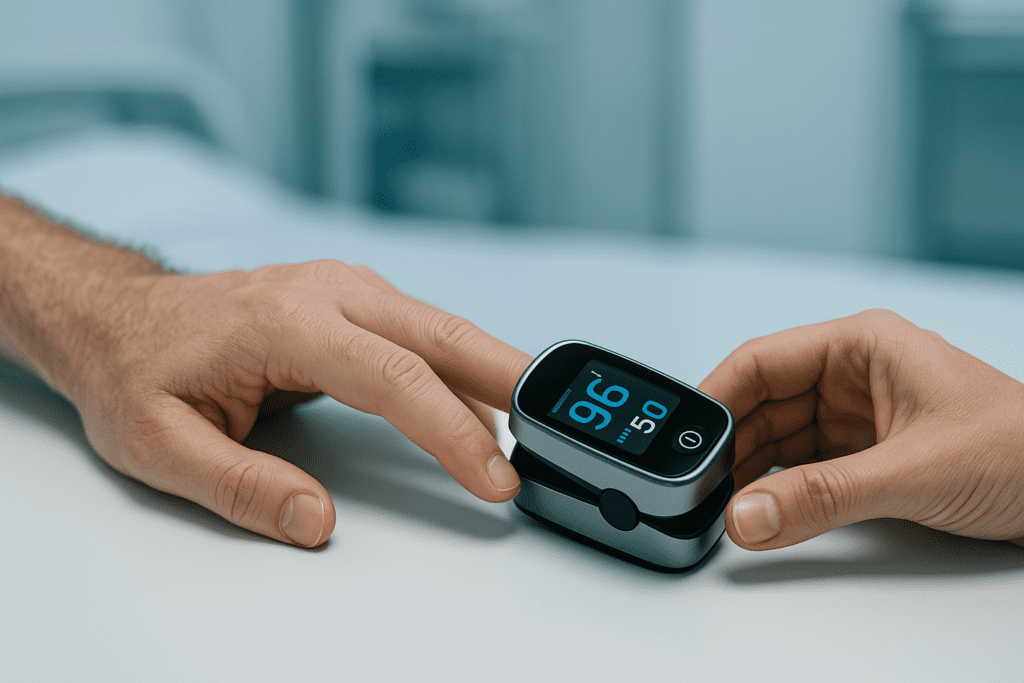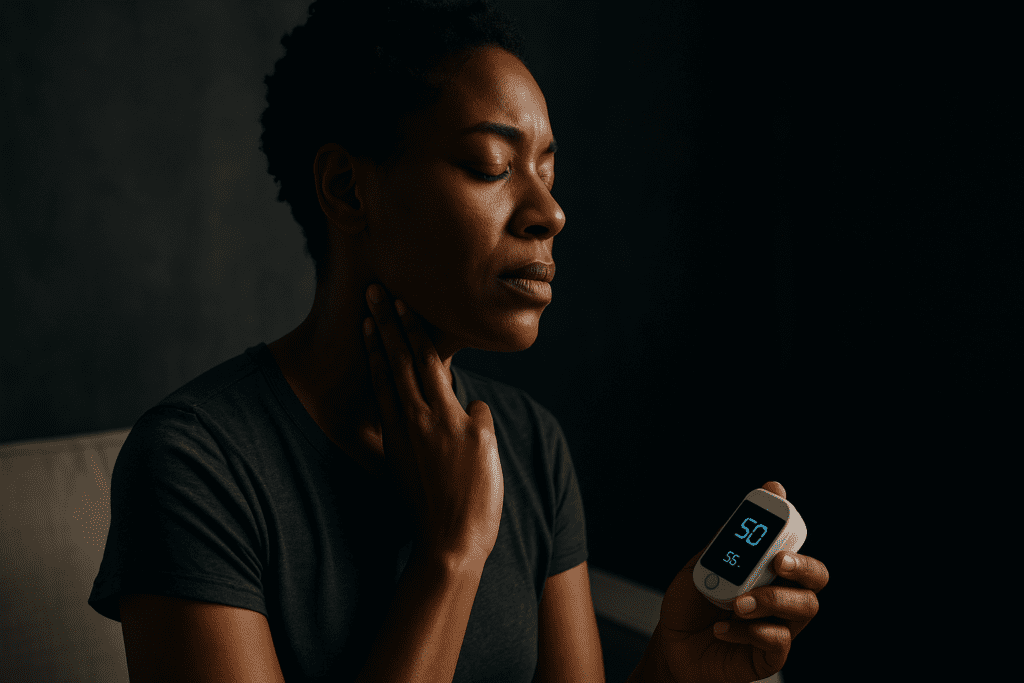Understanding Resting Heart Rate and Its Role in Cardiovascular Health
The resting heart rate—a simple yet revealing biomarker—serves as a window into your cardiovascular and overall health. It reflects how efficiently your heart functions when the body is at complete rest, and can fluctuate based on a host of factors including age, physical condition, stress levels, medications, and lifestyle choices. While most medical authorities define the normal resting heart rate for adults as ranging from 60 to 100 beats per minute, values below or above that spectrum can be significant, especially when persistent or symptomatic.
You may also like: Top Cardiologist-Approved Cardio Workouts to Improve Cardiovascular Fitness and Heart Health Naturally
A resting heart rate of 50 beats per minute often sparks questions, particularly among individuals who aren’t endurance athletes or physically conditioned. The query “is a resting heart rate of 50 good” may sound simple, but it opens a broader discussion that merges physiology, fitness, and potential pathology. Notably, elite athletes and highly trained individuals often exhibit a resting heart rate of 50 or even lower due to a more efficient cardiovascular system that requires fewer beats to pump blood throughout the body. Yet in others, a heart rate of 50 might prompt concern if accompanied by fatigue, dizziness, or fainting.
As we explore whether a resting heart rate of 50 is good or concerning, we must dissect what this measure reveals about cardiovascular fitness, potential health risks, and when medical evaluation is warranted. More importantly, we will also review strategies on how to improve resting heart rate safely and naturally for those who find theirs to be outside the healthy range.
Athlete Resting Heart Rate: A Marker of Exceptional Cardiovascular Efficiency
For decades, sports cardiologists and exercise physiologists have emphasized the relationship between endurance training and a lower resting heart rate. The term athlete resting heart rate refers to the significantly lower pulse observed in individuals with high levels of aerobic conditioning. For trained athletes, particularly runners, cyclists, swimmers, and triathletes, a resting heart rate of 40–50 beats per minute is not only common but expected.
This phenomenon stems from physiological adaptations. Regular aerobic training leads to an increase in stroke volume—the amount of blood ejected from the left ventricle per beat—allowing the heart to maintain adequate circulation with fewer beats. Over time, the vagus nerve, which governs the parasympathetic “rest and digest” branch of the nervous system, becomes more dominant. This vagal tone suppresses heart rate, contributing to the athlete resting HR profile.
Thus, in the context of an athlete, a heart rate of 50 is generally interpreted as a sign of excellent cardiac health, not bradycardia (a condition defined as a heart rate under 60 bpm). This distinction underscores the importance of interpreting numbers within their clinical and physiological context. A resting heart rate of 50 may be ideal in one person and a red flag in another, depending on their baseline health, activity level, and accompanying symptoms.
When a Resting Heart Rate of 50 Requires Medical Attention
While many individuals with a resting heart rate of 50 are healthy—particularly if they are physically active—there are scenarios in which this finding may indicate underlying issues. Bradycardia, when symptomatic, can reduce oxygen delivery to tissues, leading to fatigue, shortness of breath, dizziness, or even syncope (fainting). If someone experiences these symptoms alongside a heart rate of 50 or below, medical evaluation is critical.
In non-athletic individuals, a resting heart rate of 50 might be caused by hypothyroidism, electrolyte imbalances, certain medications (like beta-blockers or calcium channel blockers), or intrinsic heart conditions such as sick sinus syndrome. Older adults may also experience age-related degeneration of the heart’s electrical conduction system, resulting in slow rhythms.
It’s also important to assess resting heart rate trends over time. A sudden or unexplained drop in resting heart rate without a corresponding improvement in fitness may warrant further investigation. In clinical practice, physicians use tools such as electrocardiograms, Holter monitors, and echocardiograms to assess the rhythm, function, and structure of the heart in such cases.

How to Improve Resting Heart Rate Safely and Effectively
For individuals whose resting heart rate is elevated or inconsistent with their fitness goals, there are evidence-based strategies that can help lower it safely. Understanding how to improve resting heart rate begins with lifestyle modifications that enhance cardiovascular efficiency, reduce stress, and support overall metabolic health.
Regular aerobic exercise is the cornerstone of heart rate improvement. Activities like brisk walking, cycling, swimming, and running help strengthen the heart muscle and improve oxygen delivery throughout the body. As stroke volume increases, the heart becomes more efficient, resulting in a gradual reduction in resting heart rate over weeks to months of consistent training. Strength training, though less influential on heart rate, complements cardiovascular fitness and promotes overall metabolic health.
Sleep is another critical component. Poor sleep quality or insufficient duration can elevate resting heart rate and impair autonomic balance. Prioritizing 7 to 9 hours of restorative sleep per night, along with healthy sleep hygiene habits, can help recalibrate circadian rhythms and support heart health.
Dietary strategies also play a role. A heart-healthy diet rich in fruits, vegetables, whole grains, lean proteins, and omega-3 fatty acids supports vascular function and reduces inflammation. Avoiding excessive caffeine, alcohol, and processed foods can also help stabilize heart rate patterns. Lastly, stress management through meditation, deep breathing, yoga, or cognitive behavioral therapy can positively influence the autonomic nervous system and support a healthier pulse.
Interpreting a Resting Heart Rate of 52 in Women: Normal or Not?
Gender-specific cardiovascular physiology deserves careful consideration. Many women wonder whether a resting heart rate of 52 is normal or indicative of a potential issue. In most healthy adult women, this value falls within an acceptable range—especially in those who are physically fit. Female endurance athletes often exhibit heart rates in the high 40s to low 50s, similar to their male counterparts.
However, hormonal fluctuations, pregnancy, and menopausal status can all influence heart rate variability in women. For example, during pregnancy, resting heart rate naturally increases due to elevated blood volume and cardiac output. Conversely, after menopause, some women may experience changes in autonomic regulation that alter heart rate patterns.
It is important to contextualize a resting heart rate of 52 in women alongside other vital signs, symptoms, and lifestyle factors. If accompanied by fatigue, lightheadedness, or exercise intolerance, this value may need to be evaluated by a healthcare professional. Still, in the absence of concerning symptoms, a resting heart rate in the low 50s often indicates a strong, efficient heart.
Pulse Rate 66: Is It Ideal for Cardiovascular Health?
While much attention is given to bradycardia, a pulse rate of 66 falls squarely within the normal adult range and is often viewed as a favorable indicator of cardiovascular health. It reflects a heart that is neither under strain nor struggling to keep up with the body’s metabolic demands. In clinical settings, a resting pulse in the mid-60s is commonly associated with well-regulated autonomic function and good fitness levels, especially in non-athletes.
Interestingly, a pulse rate of 66 might also be a transitional marker. Individuals who adopt regular aerobic exercise may observe their resting heart rate drop from the 70s or 80s into the 60s as their fitness improves. This can be a reassuring sign of progress, particularly in patients managing cardiovascular risk factors like hypertension or metabolic syndrome.
Nevertheless, it’s important not to fixate on a single number. Heart rate trends, variability, and how the heart responds to exertion and recovery all paint a more complete picture. A pulse rate of 66 should be celebrated as a healthy metric, especially when supported by a balanced lifestyle and absence of symptoms.
Exploring the Athlete Resting HR: How Training Affects the Heart Over Time
The term athlete resting HR serves as a testament to the body’s ability to adapt to physical demands over time. When an individual engages in long-term cardiovascular training, the heart responds not just by growing stronger, but by developing a more efficient rhythm. As the heart chambers enlarge and the stroke volume increases, the body requires fewer beats per minute to deliver the same amount of blood, oxygen, and nutrients.
This is why well-conditioned athletes often present with a resting heart rate of 50 or even lower. Some Olympic-level endurance athletes may even display rates in the upper 30s. Far from being a cause for concern, this bradycardic adaptation signifies superior autonomic regulation and cardiovascular endurance. However, distinguishing between healthy athletic bradycardia and pathological bradycardia remains a crucial clinical task.
Understanding this dynamic also illustrates why improving cardiorespiratory fitness is the most effective strategy for lowering resting heart rate naturally. Whether one is a seasoned runner or a previously sedentary adult adopting a walking routine, consistent training can lead to meaningful changes in resting HR over time.
When a Heart Rate of 50 Is Part of the Bigger Picture
Numbers never exist in isolation in medicine. A heart rate of 50 could be a sign of peak physical conditioning—or it could be a red flag if accompanied by adverse symptoms or underlying disease. This duality highlights the importance of personalized assessment when interpreting cardiovascular metrics.
For example, a sedentary adult with a heart rate of 50 might require further workup to rule out conduction system disease or medication side effects. In contrast, a fit 30-year-old who runs 20 miles a week might have a heart rate of 50 as part of a normal, adaptive physiological state. Clinicians take into account the full clinical picture—medical history, physical activity, symptoms, and diagnostic tests—before determining whether further intervention is needed.
In some instances, wearable health technology has brought these numbers to light in previously asymptomatic individuals. As fitness trackers and smartwatches grow more sophisticated, they can detect heart rate trends that prompt users to seek medical evaluation. While this democratization of data empowers patients, it also demands a higher level of health literacy to interpret these values correctly.

Should You Worry About a Resting Heart Rate of 50?
The answer to the question “is a resting heart rate of 50 good” hinges on context. In athletes or highly active individuals, a heart rate of 50 is almost always benign and reflective of superior cardiovascular conditioning. In fact, it may be a target worth striving for through regular aerobic exercise, stress reduction, and overall heart health.
However, if a person with a resting heart rate of 50 experiences symptoms such as chest pain, dizziness, fainting, or significant fatigue, it could signal an underlying issue that warrants further evaluation. Likewise, older adults or those on medications affecting heart rhythm should consult their physician if a sudden drop in heart rate occurs.
In the end, resting heart rate is a valuable metric—but one that must be interpreted as part of a broader cardiovascular profile. Knowing your number, tracking trends, and understanding how to improve resting heart rate through safe, evidence-based methods empowers individuals to take control of their heart health proactively.
Frequently Asked Questions (FAQ): Understanding Resting Heart Rate, Fitness, and Cardiovascular Health
1. Can a resting heart rate of 50 be a sign of overtraining in athletes?
Yes, while a resting heart rate of 50 is often considered a hallmark of cardiovascular fitness, it can sometimes be misleading in the context of overtraining. Endurance athletes with exceptionally low heart rates may not always be in optimal condition—if fatigue, irritability, or poor performance accompanies the low athlete resting heart rate, it could suggest parasympathetic overtraining. This occurs when the body doesn’t recover adequately between training sessions, resulting in suppressed nervous system activity. So while many ask, “is a resting heart rate of 50 good,” it’s critical to assess that number alongside energy levels, sleep quality, and performance trends. If an athlete resting HR is unusually low and paired with physical or emotional exhaustion, rest and reevaluation of the training regimen are warranted.
2. What are the long-term cardiovascular effects of maintaining a resting heart rate of 50?
Maintaining a resting heart rate of 50 over the long term—if it’s due to high fitness and not underlying pathology—can support more efficient cardiac function and reduced cardiovascular strain. Studies show that individuals with lower resting heart rates tend to experience lower all-cause mortality and fewer cardiac events over time. However, a consistently low heart rate of 50 without adequate physical activity may indicate conduction issues in the heart, especially as we age. Over years, this could predispose some individuals to syncope or require pacemaker implantation, particularly if symptoms develop. So while the answer to “is a resting heart rate of 50 good?” is usually yes in fit individuals, it must be considered within the full clinical picture.
3. Are there hormonal differences that influence a resting heart rate of 52 in women?
Yes, hormonal fluctuations throughout a woman’s life—from menstruation to menopause—can significantly impact heart rate regulation. A resting heart rate of 52 in women might be affected by estrogen levels, which help modulate autonomic tone. For instance, during the luteal phase of the menstrual cycle or in perimenopause, some women may experience mild increases in resting HR. Conversely, women on hormone replacement therapy may notice stabilization or even decreases in heart rate variability. Therefore, interpreting a resting heart rate of 52 woman should include awareness of hormonal status, medication use, and any vasomotor symptoms that might be influencing cardiovascular patterns.
4. How can I improve my resting heart rate without intense workouts?
Learning how to improve resting heart rate doesn’t necessarily require running marathons or hours in the gym. For those unable or unwilling to engage in high-intensity exercise, practices like daily brisk walking, tai chi, or yoga can meaningfully impact vagal tone. Deep breathing exercises and mindfulness meditation also reduce sympathetic nervous system activation, helping to gradually lower a heart rate of 50 to 60 bpm over time. Dietary approaches—particularly those that increase potassium and magnesium intake while reducing sodium—also support vascular health and pulse control. Understanding how to improve resting heart rate holistically allows individuals to achieve optimal results without aggressive interventions.
5. Is a pulse rate of 66 healthy for middle-aged adults with no athletic background?
A pulse rate of 66 in sedentary or moderately active middle-aged adults is often considered a sign of stable cardiovascular function. Unlike the athlete resting heart rate, which may be much lower, a pulse in the 60s typically suggests that the heart is functioning efficiently without signs of stress. That said, the context still matters. If a pulse rate of 66 is a recent improvement due to lifestyle changes, it could reflect enhanced heart health. However, if accompanied by irregular rhythms or unexplained fatigue, it may warrant further cardiac evaluation. Generally, though, for non-athletes, a pulse rate of 66 is reassuring and falls well within the healthy range.
6. Can medications artificially lower resting heart rate to 50 bpm or lower?
Absolutely. Beta-blockers, calcium channel blockers, and certain antiarrhythmic drugs are designed to suppress the heart’s natural pacemaking activity. In some patients, these medications can result in a resting heart rate of 50 or even lower. This doesn’t automatically make the result dangerous, especially if the person is asymptomatic and closely monitored. However, for someone not classified under the athlete resting HR category, medication-induced bradycardia could signal overtreatment. Healthcare providers may adjust dosages or choose alternative therapies if a patient’s heart rate of 50 leads to symptoms like dizziness or fatigue.
7. Why do some highly fit people still have a resting heart rate above 60?
Not all fit individuals will have a low athlete resting heart rate. Genetics, body size, and underlying autonomic nervous system tone all influence heart rate beyond just physical fitness. Some endurance athletes, despite exceptional aerobic capacity, maintain a pulse rate of 66 or higher due to genetic baseline or stress levels. Moreover, chronic sleep deprivation, overuse of stimulants like caffeine, or undiagnosed thyroid disorders can elevate even a well-trained individual’s heart rate. Therefore, while a resting heart rate of 50 is often viewed as ideal for athletes, a higher rate doesn’t automatically indicate poor health—it could reflect other physiological nuances.
8. How does sleep affect resting heart rate in women compared to men?
Sleep quality impacts heart rate for all people, but research suggests that women may experience more dramatic heart rate fluctuations in response to poor sleep. A resting heart rate of 52 in women who are well-rested can increase to the high 60s with just a few nights of insufficient rest. This variation appears to be related to differences in REM sleep duration, hormone levels, and cardiovascular stress sensitivity. Women with sleep apnea, for instance, may not exhibit the classic symptoms seen in men but might still display subtle shifts in resting heart rate patterns. Therefore, monitoring heart rate alongside sleep hygiene habits may offer early insight into cardiovascular risks, especially in women with a resting heart rate 52 or slightly above.
9. Are wearable devices reliable for tracking a resting heart rate of 50 accurately?
Wearable fitness trackers have improved in accuracy, particularly those that use photoplethysmography (PPG) technology. However, for individuals with a heart rate of 50 or lower—especially those with an athlete resting HR—many devices may struggle to capture true readings, especially at night or during motion. Cold skin temperature, wrist positioning, and sensor sensitivity can all introduce inaccuracies. Clinical-grade ECG monitoring remains the gold standard, especially if the resting rate is unusually low and under evaluation. Still, for general trends, modern smartwatches can reliably indicate whether a resting heart rate of 50 is consistent or fluctuating, which is often sufficient for non-clinical tracking.
10. What role does emotional stress play in resting heart rate patterns?
Emotional stress can significantly elevate baseline heart rate, often masking what might otherwise be a low resting heart rate of 50. Chronic activation of the sympathetic nervous system suppresses parasympathetic recovery, making it harder for even fit individuals to return to baseline. This is why individuals practicing intense mindfulness or meditation often achieve athlete resting heart rate levels without traditional endurance training. For women especially, the intersection of caregiving stress, workplace demands, and hormonal fluctuations can challenge efforts to maintain a resting heart rate of 52 or lower. Addressing stress through therapy, social support, and structured relaxation can be just as effective as physical training when exploring how to improve resting heart rate long-term.

Final Thoughts: What Your Heart Rate Says About You—and When to Take Action
As we draw conclusions about resting heart rate, one truth stands out: it is both a mirror and a messenger. A heart rate of 50 can be the result of years of disciplined training or a quiet sign that something isn’t quite right. Whether it’s an athlete resting heart rate, a resting heart rate of 52 in women, or a pulse rate of 66, each number deserves thoughtful interpretation rather than reactive concern.
For those looking to optimize heart health, the goal should be progress, not perfection. Learning how to improve resting heart rate through cardiovascular exercise, stress management, nutrition, and sleep forms the cornerstone of long-term wellness. If your resting heart rate is 50 and you feel strong, energetic, and healthy, there may be no need for concern. But if doubts linger, consulting a medical professional for guidance can offer clarity and peace of mind.
Ultimately, the rhythm of your heart offers a wealth of information about your body’s internal state. By listening to it—literally and metaphorically—you can stay attuned to your well-being and take informed steps toward a longer, healthier life.
normal heart rate range, bradycardia symptoms, heart rate variability, cardiovascular fitness indicators, low heart rate causes, parasympathetic nervous system, heart rhythm monitoring, signs of healthy heart, exercise and heart health, autonomic balance, sleep and heart rate, ECG heart rate tracking, fitness tracker heart rate accuracy, cardiac output efficiency, heart rate and longevity, pulse monitoring tips, low heart rate in athletes, lifestyle and heart function, stress effects on heart, aging and heart rate
Further Reading:
Is a Resting Heart Rate of 50 Good?
What Your Resting Heart Rate Says About You
Why Do Athletes Have a Lower Resting Heart Rate?
Disclaimer
The information contained in this article is provided for general informational purposes only and is not intended to serve as medical, legal, or professional advice. While MedNewsPedia strives to present accurate, up-to-date, and reliable content, no warranty or guarantee, expressed or implied, is made regarding the completeness, accuracy, or adequacy of the information provided. Readers are strongly advised to seek the guidance of a qualified healthcare provider or other relevant professionals before acting on any information contained in this article. MedNewsPedia, its authors, editors, and contributors expressly disclaim any liability for any damages, losses, or consequences arising directly or indirectly from the use, interpretation, or reliance on any information presented herein. The views and opinions expressed in this article are those of the author(s) and do not necessarily reflect the official policies or positions of MedNewsPedia.


